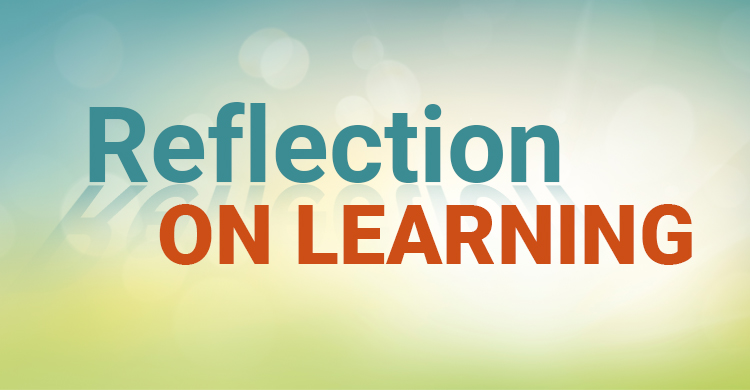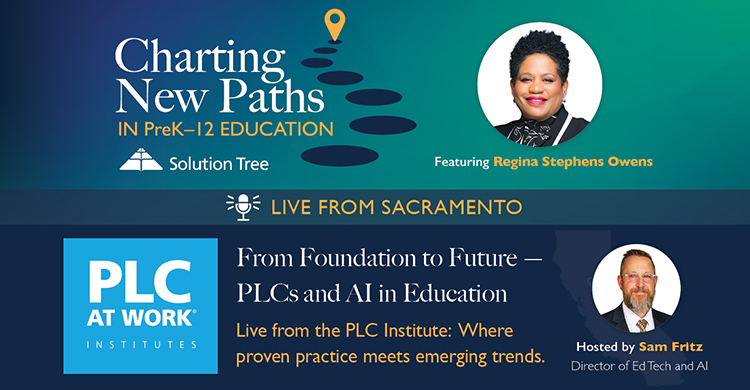Summer 2020
Based on PLC at Work® and Your Small School
Amid school closures, distance learning, and the uncertainties of COVID-19, it is important for teachers in small schools to focus on what they can control. And key to what can be controlled is clear communication about student learning from one grade level/content team to the next, as we transition from spring 2020 to a new school year this fall.
The summer of 2020 provides educators the opportunity to reflect on equity and access to learning for all students. It is a summer to reflect on and value the work in the classroom as state-mandated testing takes a back seat to teacher assessment.
Transparency around classroom assessment is more important than ever as we take stock of student learning and our ability to offer a guaranteed and viable curriculum in all learning environments, including through a variety of distance learning modes at year end. And especially in preparation for launching students back into quality learning this fall.
A year without state assessments is a year to focus on learning through the lens of teachers as assessment leaders.
Reflecting on learning by thinking of the Four Essential Questions of a PLC is essential, and provides an opportunity to evaluate the systems within our school and our classrooms, with a focus on results and an eye on predicting the future learning needs of cohorts of students.
The Four Essential Questions of a PLC:
- What do we want students to learn? (essential standards)
- How will we know if they have learned? (team-developed common assessments)
- What will we do if they don’t learn? (systematic interventions)
- What will we do if they already know it? (extended learning)
(DuFour, DuFour, Eaker, Many, 2010)
PLC Reflection Question 1:
How many essential learning standards were identified and named on a full-year pacing guide or curriculum at-a-glance document for the past school year?
PLC Reflection Question 2a:
How many of those named and identified essential learnings were assessed by the classroom teacher in the school year just completed?
PLC Reflection Question 2b:
What percentage of students scored proficient/mastery on those essential learnings (as measured by class/school/district proficiency scales or traditional cut scores, via classroom, school or district assessment)?
PLC Reflection Question 3:
As a classroom teacher or building principal, how are you sharing and prioritizing essential learnings not taught and/or not assessed (or with extremely low percentages of proficiency due to school closures/distance learning) with the next grade/content level team to ensure equitable access to the guaranteed and viable curriculum for each cohort of students?
PLC Reflection Question 4:
How are you organizing learning in the new school year to ensure students that did attain grade-level learning and demonstrate solid proficiency/mastery of essential learning—despite school closures/distance learning—are provided opportunities to continue on pace with next-level curriculum as school starts in the fall?
These reflective questions require each classroom teacher or collaborative team of teachers to analyze classroom assessment data through a new filter of importance to ensure student learning is scaffolded to support continued academic growth. This information needs to be passed from one team to the next as our students transition to new grade levels or move forward in sequenced courses.
A mentality shift
Now is not the time for educators to have a “woe is me” mentality. We lost a few weeks of teaching, and we lost the opportunity to have our high-quality teachers in front of students to provide face-to-face support and engagement in learning. But let’s also be realistic that within those lost weeks we had planned for days of state/national assessments, field trips, school picnics, end of year assemblies, celebrations, and time for cleaning out rooms/lockers and providing the closure to the year. In reality, we may not have lost as many academic days as we estimate in casual conversations.
If your teachers lost more than 80% of essential learning and assessment opportunities it is more than likely a pacing problem, not a COVID-19 problem.
So, how do we know what our students learned over the past year? How do we answer PLC Reflection Questions 2a and 2b so we can move forward with PLC Reflection Questions 3 & 4 as we head back to school in a few months?
This is the perfect time to reflect on your classroom assessment data in a meaningful way and pass that information forward in a concise manner for the next grade level/content team.
Reflection on Essential Learning: 2019-2020 Essential Standards and ‘I Promise’ Skills taught and assessed by Hot Springs County High School Math Teachers:
| Grade/
Content |
Essential Standards/‘I Promise’ skills | Essential Learning taught & assessed during 2019/2020 school year | Percent of students demonstrating proficiency/mastery on common formative assessments of essential learning |
| Math 1 | 42 Essential Standards/Skills Identified | 35 Essential Learning Standards bundled into 9 Common Assessments
*Cut score 80% |
86% of Math 1 students tested proficient on 7/9 common assessments.
63% of Math 1 students tested proficient on 2**/9 common assessments. **Scaffold Learning: Linear Equations and Quadratics |
| Essential Standards not formally taught/assessed in 2019-2020: 8.G.2, 8.G.3, 8.G.4 (Transformations); A.REI.4B, F.IF.8A (Quadratic Function); S.ID.1, S.ID.2 (Statistics). | |||
Cohort Context: Math 1 9th-grade students were ranked #1 in Wyoming with 82% scoring as proficient/advanced at the feeder school, Thermopolis Middle School, the prior year in spring 2019, as an 8th grade cohort on the state assessment (state average was 54% proficient).
Reflecting on the 2019-2020 classroom assessment data in Math 1 allows us to draw some conclusions:
- Forty-two essential learning standards were identified at the beginning of the school year, and then 35 essential learning standards were taught and assessed via 9 common formative assessments. This means that 7 essential learning standards were missed this past school year, and the Math 2 teacher(s) at the high school will need to know which 7 were missed due to school closures, challenges of distance learning or pacing issues.
- This cohort of students has shown high levels of academic achievement in the past, and 86% of students demonstrating proficiency on 7 out of 9 unit assessments is consistent with and may be an accurate depiction of student learning levels. We can feel confident in student skills within the essential learning standards bundled into those 7 units.
- Two units of instruction (Linear Equations and Quadratics) are identified as areas that may need remediation and/or scaffolding of learning in Math 2, with only 63% of students demonstrating proficiency.
- Seven identified standards were not formally assessed, and a proficiency level has not been determined for students. In order to provide equitable access, all students will need to see these standards prior to new learning within these instructional strands.
The simple work of each team of K-12 teachers completing a reflection of essential learning will allow schools to move forward with student learning in the fall with confidence. Small schools and small school districts have an advantage in knowing exactly whom to pass on this information to during the summer to allow for student learning to move forward seamlessly in the fall.
References
DuFour, R., DuFour, R., Eaker, R., & Many, T. (2010). Learning by doing: A handbook for professional learning communities at work. Bloomington, IN: Solution Tree Press.







